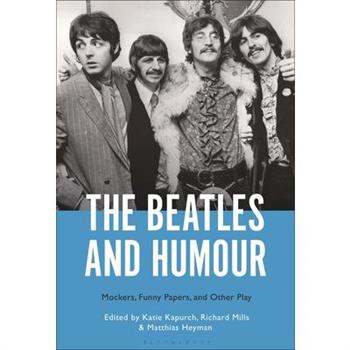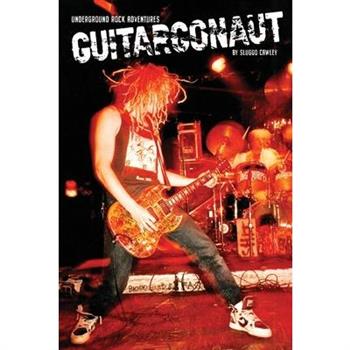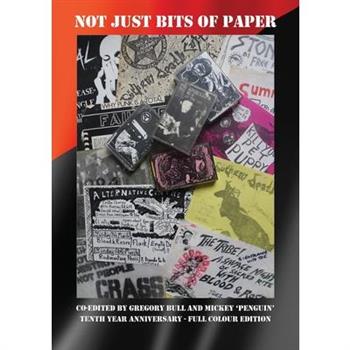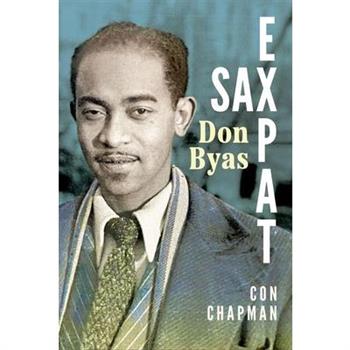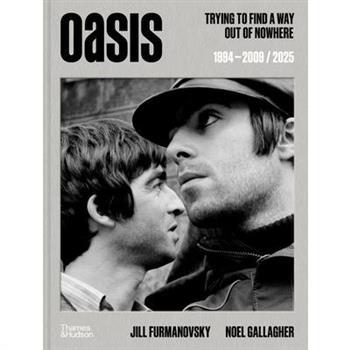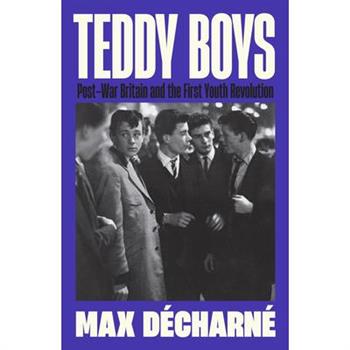Giant Steps: Bebop and the Creators of Modern Jazz, 1945-65
Giant Steps examines the most important figures in the creation of modern jazz, detailing the emergence of bebop through the likes of Dizzy Gillespie, Charlie Parker, Fats Navarro, Bud Powell and Thelonious Monk. Using this as its starting point, Giant Steps subsequently delves into the developments of jazz composition, modal jazz and free jazz. The music of each of these great masters is examined in detail and will provide both a fine introduction for the large audience newly attracted to the music but unsure of their direction through it, as well as an entertaining and informative read for those with a more substantial background.
The need to reconstitute the School of Military Music
Decolonizing Contemporary Gospel Music Through PRAXIS
Is contemporary Black British gospel music a coloniality? What theological message is really conveyed in these songs?In this book, Robert Beckford shows how the Black British contemporary gospel music tradition is incrisis because its songs continue to be informed by colonial Christian ideas about God.Beckford explores the failure of both African and African Caribbean heritage Churches to Decolonise their faith, especially the doctrine of God, biblical interpretation and Black ontology. This predicament has left song leaders, musicians and songwriters with a reservoir of ideas that aim to disavow engagement with the social-historical world, black Biblical interpretation and the necessity of loving blackness.This book is decolonisation through praxis. Reflecting on the conceptual social justice album 'The Jamaican Bible Remix' (2017) as a communicative resource, Beckford shows how to develop production tools to inscribe decolonial theological thought onto Black British music(s). The outcome of this process is the creation of a decolonial contemporary gospel music genre. The impact of the album is demonstrated through case studies in national and international contexts.
Musical Intimacy
Discourse on popular music frequently describes artists' recordings and performances as "intimate." Yet that discourse often stops short of elucidating how a mass-produced commodity such as popular music is able to elicit feelings of intimacy with and among its audience. Through detailed analysis of popular music's composition, performance, production, and promotion, Musical Intimacy examines how intimacy is constructed and perceived in popular music via its affective and technological affordances. From the recording studio to the concert stage, from collective experience to individual listening and perception, this book presents a working understanding of musical intimacy.
The Beatles and Humour
The Beatles are known for cheeky punchlines, but understanding their humor goes beyond laughing at John Lennon's memorable "rattle your jewelry" dig at the Royal Variety Performance in 1963. From the beginning, the Beatles' music was full of wordplay and winks, guided by comedic influences ranging from rhythm and blues, British radio, and the Liverpool pub scene. Gifted with timing and deadpan wit, the band habitually relied on irony, sarcasm, and nonsense. Early jokes revealed an aptitude for improvisation and self-awareness, techniques honed throughout the 1960s and into solo careers. Experts in the art of play, including musical experimentation, the Beatles' shared sense of humor is a key ingredient to their appeal during the 1960s-and to their endurance.The Beatles and Humour offers innovative takes on the serious art of Beatle fun, an instrument of social, political, and economic critique. Chapters also situate the band alongside British and non-British predecessors and collaborators, such as Billy Preston and Yoko Ono, uncovering diverse components and unexpected effects of the Beatles' output.
Guitargonaut
Guitargonaut (gĭ-t瓣r′gə-n繫t)An adventurer engaged in a quest. With a guitar. And a constantly evolving idea of how to play it.Sluggo started rock bands and toured the world for four decades; 1980-2020.These are stories of what he found out there.Each chapter mostly revolves around individual gigs, with a couple notable exceptions.Some exceptions are chapters about his friendships with: Nirvana (1989-1990) with many previously unseen photographsElliott Smith (1993-2000) with unpublished photographsDuring the time he toured, Sluggo and his wife lost their home.They became parents, one child became quite ill.Many of these stories predate GPS and cell phones.This book contains hundreds of photos, flyers & rock ephemera embedded in every chapter.In the end, it's a book about people, community and, well, love.
Have Yourself a Merry Little Christmas
As recorded by the USAF Airmen of Note and arranged by Alan Baylock in the style of Li'l Darlin'," this slow swing is the ideal chart for the holidays. It features no improvised solo but it has a written trumpet melody solo. Lead trumpet range is to written G on top of the staff, and it's technically a very easy chart to play. Another superb Baylock arrangement. (3:02)"
Parsifal - Die beliebtesten Opern
Parsifal ist das letzte musikdramatische Werk von Richard Wagner. Wagner selbst bezeichnete das dreiaktige St羹ck als ein B羹hnenweihfestspiel und verf羹gte, dass es ausschlie?lich im Bayreuther Festspielhaus aufgef羹hrt werden sollte. Zur Handlung: Auf einer Waldlichtung nahe der Gralsburg weckt Ritter Gurnemanz einige Knappen. Er fordert sie auf, zu beten und das Morgenbad des an einer nicht heilenden Wunde leidenden jungen Gralsk繹nigs Amfortas vorzubereiten. Die Szene wird durch L瓣rm vom nahen See gest繹rt. Die Ritter haben einen Knaben gefangen, der mit Pfeil und Bogen einen heiligen Schwan get繹tet hat. Es ist Parsifal, der Sohn der Herzeleide und des vor seiner Geburt im Kampf gefallenen Ritters Gamuret. Der Knabe wuchs unter alleiniger Obhut seiner Mutter im Wald ohne jeglichen Kontakt zur Au?enwelt auf. Er selbst kennt weder seinen Namen, noch wei? er, woher er kommt und wer sein Vater ist. Doch Kundry kennt seine Geschichte und erz瓣hlt vom Tod seiner Mutter. Gurnemanz hofft, in ihm den in der Vision des Amfortas angek羹ndigten "reinen Toren" gefunden zu haben, und nimmt ihn mit zur Gralsburg, w瓣hrend Kundry in einen hypnotischen Schlaf f瓣llt. Wilhelm Richard Wagner (1813-1883 in Venedig) war ein deutscher Komponist, Dramatiker, Dichter, Schriftsteller, Theaterregisseur und Dirigent. Mit seinen Musikdramen gilt er als einer der bedeutendsten Erneuerer der europ瓣ischen Musik im 19. Jahrhundert. Er ver瓣nderte die Ausdrucksf瓣higkeit romantischer Musik und die theoretischen und praktischen Grundlagen der Oper, indem er dramatische Handlungen als Gesamtkunstwerk gestaltete und dazu die Libretti, Musik und Regieanweisungen schrieb. Seine Neuerungen in der Harmonik beeinflussten die Entwicklung der Musik bis in die Moderne.
Die Jungfrau von Orleans
Die Zeit der Handlung f瓣llt mit dem Jahr 1430 in eine sp瓣te Phase des Hundertj瓣hrigen Krieges. Die Szenen wechseln zwischen verschiedenen Gegenden Frankreichs. Beim fraglichen Krieg handelte es sich nicht etwa um einen Konflikt zwischen bereits gefestigten Nationen, sondern um eine Auseinandersetzung zwischen gro?en Lehensverb瓣nden, die in einer verflochtenen Verwandtschaftsbeziehung zueinander standen. K繹nig Karl IV. hatte keinen direkten m瓣nnlichen Nachkommen hinterlassen und damit begann der Legitimationsstreit um die franz繹sische Krone. Als Johanna wirkte, war Frankreich in drei politische R瓣ume aufgeteilt: Der Dauphin und sp瓣tere K繹nig Karl VII. wurde auf ein Gebiet s羹dlich der Loire zur羹ckgedr瓣ngt und Orl矇ans lag somit direkt an der Front und wurde von den Engl瓣ndern belagert. Herzog von Bedford regierte im Auftrag des englischen K繹nigs, der auch den Titel K繹nig von Frankreich f羹r sich beanspruchte, 羹ber die Normandie, Bretagne, Champagne, Paris und die Guyenne. Philipp der Gute von Burgund schlie?lich, herrschte 羹ber Burgund, die Freigrafschaft Burgund und Teile von Flandern. Friedrich von Schiller (1759-1805), 1802 geadelt, war ein Arzt, Dichter, Philosoph und Historiker. Er gilt als einer der bedeutendsten deutschsprachigen Dramatiker, Lyriker und Essayisten.
Theology and the Blues
Theology and the Blues showcases theological themes inherent within the organic and expressive genre of the blues. The blues offers safe space to explore the raw material of our fallen condition, urging our voices to join the universal, primal cry for new creation.
The Jazz Barn
How a small town in New England became a home for jazz, challenging conventional assumptions about the relationship between culture and landscape, art and geography, town and city, and race and place. This is a book about what happened in the 1950s in a barn, an icehouse, and a greenhouse in the verdant Berkshire Hills of western Massachusetts. Against the backdrop of McCarthyism, the civil rights movement, the expansion of the Afro-Caribbean diaspora, and postwar cultural tourism, two New Yorkers bought part of a sprawling estate in Lenox, where they converted an old barn and other outbuildings into an inn that could host musical performances and seminars. The Berkshire Music Barn went on to host jazz greats like Duke Ellington, Dave Brubeck, and Billie Holiday, as well as jazz roundtables grounded in folkloric approaches to the music. The Jazz Barn explores the cultural significance of venues like the Berkshire Music Barn and later the Lenox School of Jazz to tell a surprising story about race, culture, and place. John Gennari explores how a predominantly white New England town became a haven for African American musicians, and reveals the Berkshires as an important incubator not just of American literature and classical music but also of the Modern Jazz Quartet and Ornette Coleman's "new thing." The Berkshire Music Barn became a crucial space for the mainstreaming of jazz. By the late 1950s, the School of Jazz was an epicenter of the genre's avant-garde. Richly illustrated with the photographs of Clemens Kalischer among others, The Jazz Barn demonstrates that the locations where jazz is played and heard indelibly shape the music and its meanings.
Nairobi Hip Hop Flow
A free ebook version of this title is available through Luminos, University of California Press's Open Access publishing program. Visit www.luminosoa.org to learn more. Nairobi Hip Hop Flow combines ethnographic methods, political history, and music and performance analysis to illustrate the richness of hip hop's embodied performance practices. RaShelle R. Peck examines how hip hop artists in Nairobi's underground rap culture engage with political seriousness in lyrics and sound by fostering a creative playfulness using bodily movement. This unprecedented study shows how Nairobi artists circulate diasporic blackness while at the same time indigenizing hip hop music to interrogate Kenya's sociopolitical landscape.
Love, Cats and Cowboy Hats
Swifties have taken the world by storm. As Taylor Swift's profile has grown, as has her legion of fans, and they're now one of the biggest and most influential fanbases in the world. Over 50% of US adults now count themselves as fans of Taylor, so the Swiftieverse is only going to get biiger. With their devoted, loyal and engaged approach to supporting Taylor Swift, Swifties are one-of-a-kind. This is the ultimate guide to the Swiftieverse, with quotes from the fans and Taylor herself, trivia, facts and everything else you need to fully embrace life as a Swiftie. From Taylor's famous cats to the scarf of "All Too Well", this is the companion you need as your head into the Swiftieverse.
You’re Crazy Volume Three
You're Crazy, Volume Three is a collection of thirteen personal accounts, lyrics, and short stories written by punk rockers who have walked through darkness and lived to tell. All of the writers have experienced trauma, addiction, and mental health struggles. As you read these stories, you will learn about the private revolutions that the writers have engaged in as they strive to build more beautiful, peaceful, and satisfying lives for themselves. We are warriors. We have chosen to better ourselves. We share our stories to help ourselves heal. We share our stories so others like us can feel empowered to take control of their lives. We are the evidence that with hard work, self-love, and dedication that living better lives is possible. If we can do it, so can you.
Dressed in Black
The first full-length history of the Shangri-Las, one of the most significant--and most misunderstood--pop groups of the 1960s.Sisters Mary and Betty Weiss, together with twins Mary Ann and Marguerite Ganser, were schoolgirls when they formed the Shangri-Las in 1963, and had a meteoric rise to fame with songs like "Leader of the Pack" and "Remember (Walking in the Sand)." Their career was cut short for reasons largely beyond their control, derailed by the machinations of Mafia-linked record executives, and heartbreak and tragedy followed. Historian Lisa MacKinney marshals an impressive array of new evidence to tell the Shangri-Las' story, dispelling many myths and long-standing mysteries along the way. Equally importantly, Dressed in Black radically rewrites the accepted narrative of the Shangri-Las' place in rock history. As young women, they were permitted little agency within a male-dominated industry that viewed teenagers as fodder to be manipulated and exploited by producers, songwriters, and label owners. For decades, this has served as an excuse for critics to deny the musical input of the group members, to trivialize the Shangri-Las as a "girl group," and to assign their work a lesser rank in the canon of "authentic" rock and roll. MacKinney's great achievement here is to foreground the Shangri-Las' considerable abilities and musicality, and establish the centrality of their performance of their songs to the group's underappreciated artistic achievement.This is not to deny the critical role in the group's success of professional songwriters (including Ellie Greenwich and Jeff Barry) and writer/producer George 'Shadow' Morton, a pioneering and eccentric figure whose self-mythologizing has generated a level of obfuscation that rivals that of the Shangri-Las themselves. MacKinney's clear-sighted account reveals Morton in a completely new light--and as part of a complex ecosystem of musical relationships. Morton wrote and produced highly emotional material specifically for the Shangri-Las because he knew they had the skills to make his mini-operas not only believable, but enthralling. The group members, particularly Mary Weiss, channeled personal anguish into their extraordinary performances, which are central to the songs' impact--no less so than for such classic singers as Ella Fitzgerald and Elvis Presley, who also relied on producers and songwriters for their body of work. The Shangri-Las' impassioned delivery elicited a massive response from their audience of fellow teenagers at the time and has continued to connect profoundly with audiences ever since. MacKinney backs up these arguments with in-depth analysis of key Shangri-Las' recordings, and makes a powerful case that their achievements warrant a far more prominent place for the Shangri-Las in the history of popular music.
Sax Expat
Don Byas (1913-1972) may be lesser known than the counterparts he played with--Count Basie, Duke Ellington, and Dizzy Gillespie, among others--but he was an enigma. He never stayed with a band for long, and eventually went solo partly to make more money and partly due to his inability to work with bandleaders. Often drinking to excess, alcohol fueled his sometimes-erratic behavior on and off the bandstand. He went through at least thirteen different groups in fifteen years of professional play before leaving for Europe in 1946. Despite his fractious personality, in Europe he found peace and contentment as a family man in the Netherlands, where he lived out his days with his second wife and their four children. He learned at least seven languages during his years in Europe, and on traveling to a new country could pick up a few phrases in short order, soon speaking to the locals and even composing songs in their native tongue. In Sax Expat: Don Byas, author Con Chapman argues that Byas's relative obscurity arises from his choice to live in Europe, where he missed out on recording opportunities and exposure in the US that would have made him renowned and wealthier. His numerous achievements, including his solo on Count Basie's "Harvard Blues," which is a model of restrained invention; his interpretation of the sentimental movie theme "Laura"; and his duets with bassist Slam Stewart were included in the Smithsonian Collection of Classic Jazz and secured Byas's place in jazz history. This biography brings to life an amazing jazz story.
Sax Expat
Don Byas (1913-1972) may be lesser known than the counterparts he played with--Count Basie, Duke Ellington, and Dizzy Gillespie, among others--but he was an enigma. He never stayed with a band for long, and eventually went solo partly to make more money and partly due to his inability to work with bandleaders. Often drinking to excess, alcohol fueled his sometimes-erratic behavior on and off the bandstand. He went through at least thirteen different groups in fifteen years of professional play before leaving for Europe in 1946. Despite his fractious personality, in Europe he found peace and contentment as a family man in the Netherlands, where he lived out his days with his second wife and their four children. He learned at least seven languages during his years in Europe, and on traveling to a new country could pick up a few phrases in short order, soon speaking to the locals and even composing songs in their native tongue. In Sax Expat: Don Byas, author Con Chapman argues that Byas's relative obscurity arises from his choice to live in Europe, where he missed out on recording opportunities and exposure in the US that would have made him renowned and wealthier. His numerous achievements, including his solo on Count Basie's "Harvard Blues," which is a model of restrained invention; his interpretation of the sentimental movie theme "Laura"; and his duets with bassist Slam Stewart were included in the Smithsonian Collection of Classic Jazz and secured Byas's place in jazz history. This biography brings to life an amazing jazz story.
Oasis
Jill Furmanovsky's unparalleled work with Oasis stretches from the end of 1994--when the band's debut album, Definitely Maybe, became the fastest-selling debut album in British chart history at the time--to their last tense shows in 2009, which culminated in their split. Jill was given unprecedented access to countless worldwide performances and many recording sessions. In this single, beautiful volume, overseen and edited by Noel Gallagher, award-winner Furmanovsky presents, for the first time, her complete Oasis archive, which she describes as her best body of work, as well as insightful observations taken from notes she made at the time.Organized chronologically, the book depicts more than 500 photographs, contact sheets and sequenced film strips of the band on stage, backstage, on the road, in the studio and behind the scenes. Jill captured the drama of the band's lifestyle during the 1990s when, as she said, "they were on a comet, hanging on for dear life." The access she was given allowed closeness, and she was able to document the competitive and at times volatile relationship between Noel and Liam Gallagher up to their split in 2009, creating a poignant visual diary that is more than the sum of its parts. In this book she extends the visual story to 2025*, capturing the band in rehearsal for the upcoming reunion tour.Accompanying the images is illuminating commentary by Noel Gallagher, who relates the inside stories of the events pictured in many of the shoots and reveals an honest and touching relationship between band and photographer. Three essays by music journalists provide context to the band's story, and an introduction by Jill celebrates the supreme significance of Oasis in her 50+ years photographing musicians.* Definite...Maybe
Southern Mountain Music
This work represents a lifetime of research by Wayne Erbsen, professor of old-time and bluegrass music at the University of North Carolina at Asheville, who interviewed many legendary figures in Appalachian music. Often the first and only scholar to ever collect their stories, he provides in this book an indispensable history of bluegrass and old-time music in Appalachia for generations to come. The book begins with stories featuring many pioneers of old-time and bluegrass music. Next are chapters on brother duets from the 1930s, legendary banjo pickers and fiddle players, plus tales of 19th-century songwriters whose songs still populate bluegrass music. Also covered are wide-ranging and whimsical topics such as the Ghost of Scotty Stoneman, cowboys in bluegrass music, Charlie Cline's powerful snoring, a near-encounter with Bigfoot, and Hoss Cartwright's hat.
Teddy Boys
With their draped suits, suede creepers and immaculately greased hair, the Teddy Boys defined a new era for a generation of teenagers raised on a diet of drab clothes, Blitz playgrounds and tinned dinners. From the Edwardian origins of their fashion to the tabloid fears of delinquency, drunkenness and disorder, the story of the Teds throws a fascinating light on a British society that was still reeling from the Second World War. In the 1950s, working-class teenagers found a way of asserting themselves in how they dressed, spoke and socialised on the street. When people saw Teds, they stepped aside. Musician and author Max D矇charn矇 traces the rise of the Teds and the shockwave they sent through post-war Britain, from the rise of rock 'n' roll to the Notting Hill race riots. Full of fascinating insight, deftly sketching the milieu of Elvis Presley and Derek Bentley, Billy Fury and Oswald Mosley, Teddy Boys is the story of Britain's first youth counterculture.
Tango in Japan
Why do Japanese people love tango? Starting with this question, which the author frequently received while working as a tango violinist in Argentina, Tango in Japan reveals histories and ethnographies of tango in Japan dating back to its first introduction in the 1910s to the present day. While initially brought to Yokohama by North American tango dancers in 1914, tango's immediate popularity in Japan quickly compelled many Japanese performers and writers to travel to Argentina in search of tango's "origin" beginning in the 1920s. Many Japanese musicians, dancers, aficionados, and the wider public have, since then, approached tango as a new vehicle of expression, entertainment, and academic pursuit. The sounds of tango provided comfort and a sense of hope to many during the most turbulent years of the twentieth century, carving out distinctive characteristics of contemporary Japanese tango culture. Bypassing the West-East axis of understanding cultural transmission, Tango in Japan uncovers the processes of attraction, rejection, and self-transformation, illuminating the tension of cosmopolitan endeavors away from the Euro-American West. Based on Yuiko Asaba's field and archival work undertaken in both Japanese and Spanish languages in Japan and Argentina across two decades, and drawing on her own background as a tango violinist who performed as a member of tango orchestras in both countries, the discussions move between historical and ethnographic narratives, offering a comprehensive account of tango culture as it emerged in the history of a Japan-Argentina connection. Serving as the first in-depth work on the Japan-Argentina musical relationship, Tango in Japan tells a story that reflects the modern transformations of Japan and Argentina, and the global historical backdrops surrounding both countries.
Made in Thailand
Made in Thailand: Studies in Popular Music serves as a comprehensive and thorough introduction to the history, culture, and musicology of twentieth and twenty-first century popular music in Thailand.
One Bourbon, One Scotch, One Beer: Three Tales of John Lee Hooker
Legendary bluesman John Lee Hooker lived more life in one of his songs than the collective lifetimes of many. Spanning several decades of the American experience, One Bourbon, One Scotch, One Beer tells three tales of Hooker's storied life through the perspective of those who lived within his massive orbit, weaving textured and interpretative stories that rise to the lofty creative heights of his music and fall to the gritty reality of trying to thrive in several unforgiving eras.
Nirvana
Nirvana's meteoric rise and tragic end, details their impact on music with a day-by-day account.After Nirvana, everything changed. Kurt Cobain and his band ushered in a new era in music, bringing the authenticity of US underground punk to mainstream rock audiences. Award-winning biographer and music critic Marc Burrows dives into the world of Nirvana, providing an exhaustive day-by-day account of the lifespan of the band, from their early days touring the dive bars of the Pacific North-West through the release of 'Smells Like Teen Spirit' and Nevermind, the dark masterpiece of In Utero and Kurt Cobain's tragic death in 1994. The timeline is augmented by hyper-detailed footnotes, diving deep into the songs and albums, the impact and the fascinating unexplored corners of one of the most exciting and impactful bands that have ever been.
Taylor Swift
From studio albums to stadium tours, Taylor Swift is a record-setting pop artist whose impacts are outsized and global in scale. At the same time, she has cultivated an audience base that finds her, her songs, and her voice eminently relatable. Taylor Swift: The Star, The Songs, The Fans positions Swift as a prismatic figure for the musical world of the 21st century.This collection includes new work from interdisciplinary scholars who focus on Swift's star persona; the lyrics, themes and meanings of Swift's songs; and the ways that fans interact with Swift's work and with each other. Together, the essays evaluate Swift's career with attention to how her work has resonated in a changing global society, how she has navigated shifts in the music industry, and how she has negotiated changes in her musical transition from country to pop along the lines of her age, gender, and class identity.Including contributions by scholars, practitioners and journalists, this volume offers a serious consideration of one of today's most popular music stars that shows why and how she matters. Engaging a wide variety of disciplines and methodological perspectives, including fan studies, cultural studies, philosophy, musicology and music theory, journalism, and songwriting, Taylor Swift: The Star, The Songs, The Fans will be of interest to students and scholars of music, media studies, popular culture, fan studies, gender and sexuality studies, and sound studies.
Taylor Swift
If you're a passionate Swiftie who wants to know EVERYTHING about your favorite icon--especially her music--this luxuriously illustrated deep dive should take center stage. Featuring fresh insights from all eleven studio albums--from Taylor Swift to The Tortured Poets Department--Taylor Swift: Album by Album mines her life, lyrics, and music like nothing else before it. This book also features several chapters on all the Taylor's Version albums released to date, with panel discussions from noted Swift scholars accompanied by vibrant photography that captures Swift in each and every era, from an aspiring country musician to the dominant global force she is today. Swift's artistry, awards, and accolades are hard to encompass, from the youngest artist with a No. 1 song on the Hot Country chart to the first recipient of Billboard's Woman of the Decade award. Swifties will find that and more inside, including: Fresh insight into her lyrics, life, and loves from her earliest days as a recording artistTons of sidebars that explore her influences, lyrical references, musical knowledge, and moreDetails on album personnel, special guests, awards, and toursA special section on the Taylor's Version albums that explains how they came about and why they matter to Taylor and scores of Swifties everywhereTaylor Swift: Album by Album is more than just pretty pictures; it's a door into how and why this talented musician continues to inspire fans around the world. Young or old, OG or new Swiftie, this book has it all.
Gospel
Composer/arranger Carl Strommen delivers this gospel style swing chart for the easy red series. Carl starts things off with an a cappella section for the winds, then brings in the rhythm section on the second chorus to boost the energy. Written solos for 1st alto saxophone and 1st trumpet and an uplifting modulation bring it home. This great chart has easy ranges and sounds full with reduced instrumentation. This title is available in MakeMusic Cloud. (2:31)
Nairobi Hip Hop Flow
A free ebook version of this title is available through Luminos, University of California Press's Open Access publishing program. Visit www.luminosoa.org to learn more. Nairobi Hip Hop Flow combines ethnographic methods, political history, and music and performance analysis to illustrate the richness of hip hop's embodied performance practices. RaShelle R. Peck examines how hip hop artists in Nairobi's underground rap culture engage with political seriousness in lyrics and sound by fostering a creative playfulness using bodily movement. This unprecedented study shows how Nairobi artists circulate diasporic blackness while at the same time indigenizing hip hop music to interrogate Kenya's sociopolitical landscape.
Wise Words Oasis
No-one delivers one-liners quite like Noel and Liam Gallagher. Ahead of the hugely anticipated Oasis reunion tour, relive the funniest insights, insults, arguments and everything in between from the biggest mouths in Brit Pop. From snide asides by Noel... "[Liam is] like a man with a fork in a world of soup" "I liked [my mum]... until she gave birth to Liam." ... to positive affirmations and advice on maintaining a healthy lifestyle from Liam... "I suppose I do get sad, but not for too long. I just look in the mirror and go, `What a f***ing good-looking f*** you are.` And then I brighten up!" "Rock stars exercising? I don't think it's right. You either got it or you ain't."











